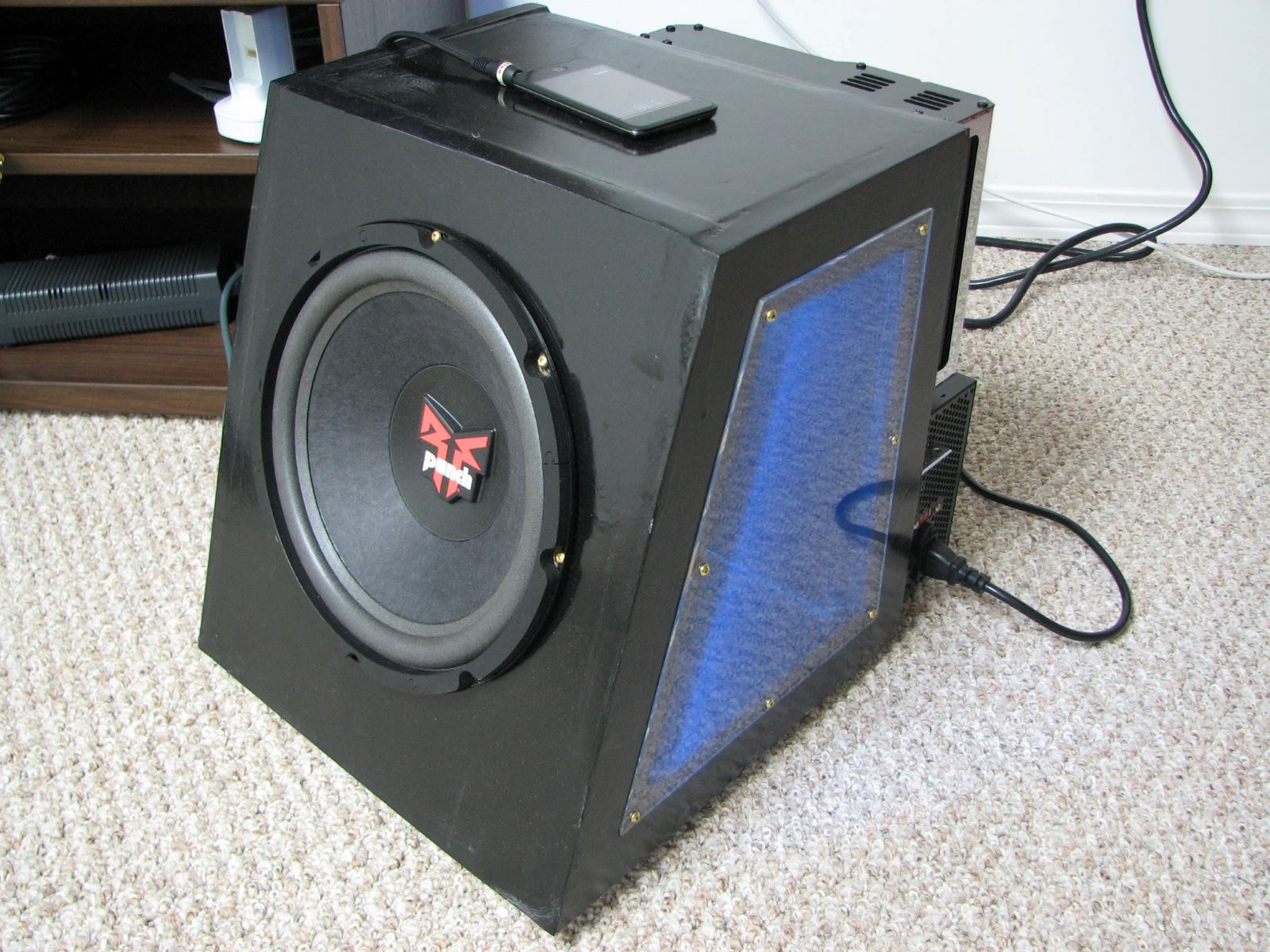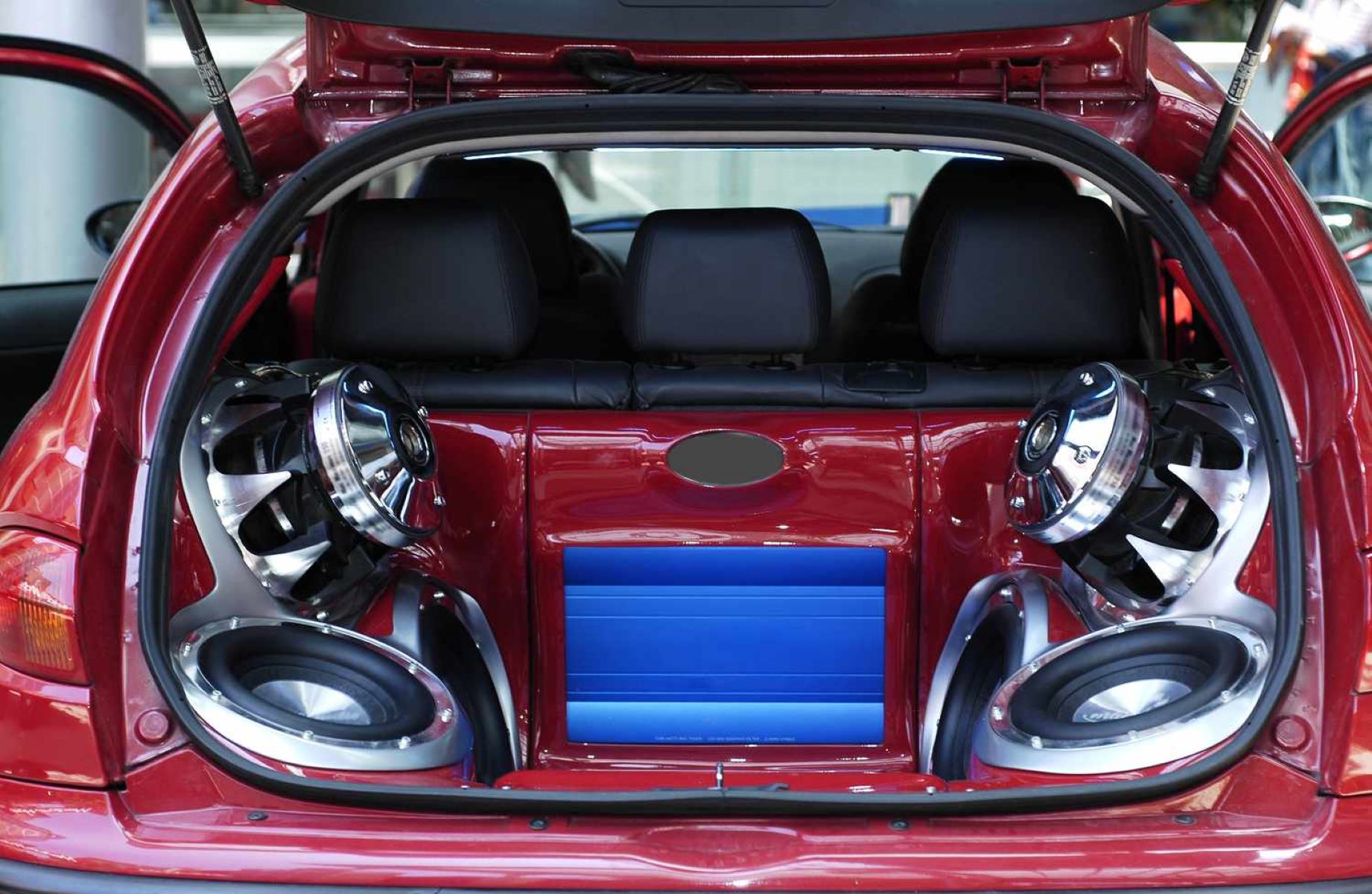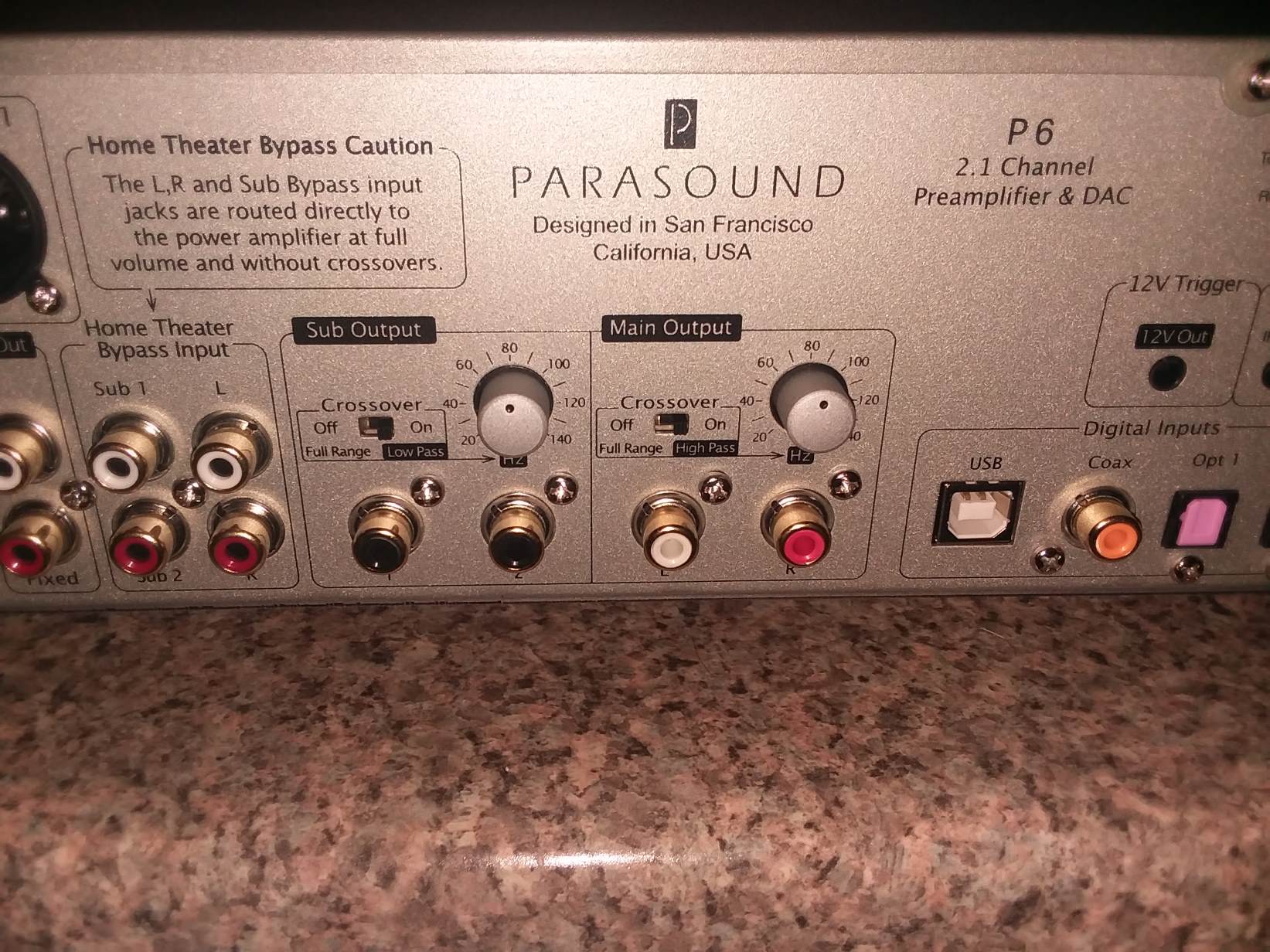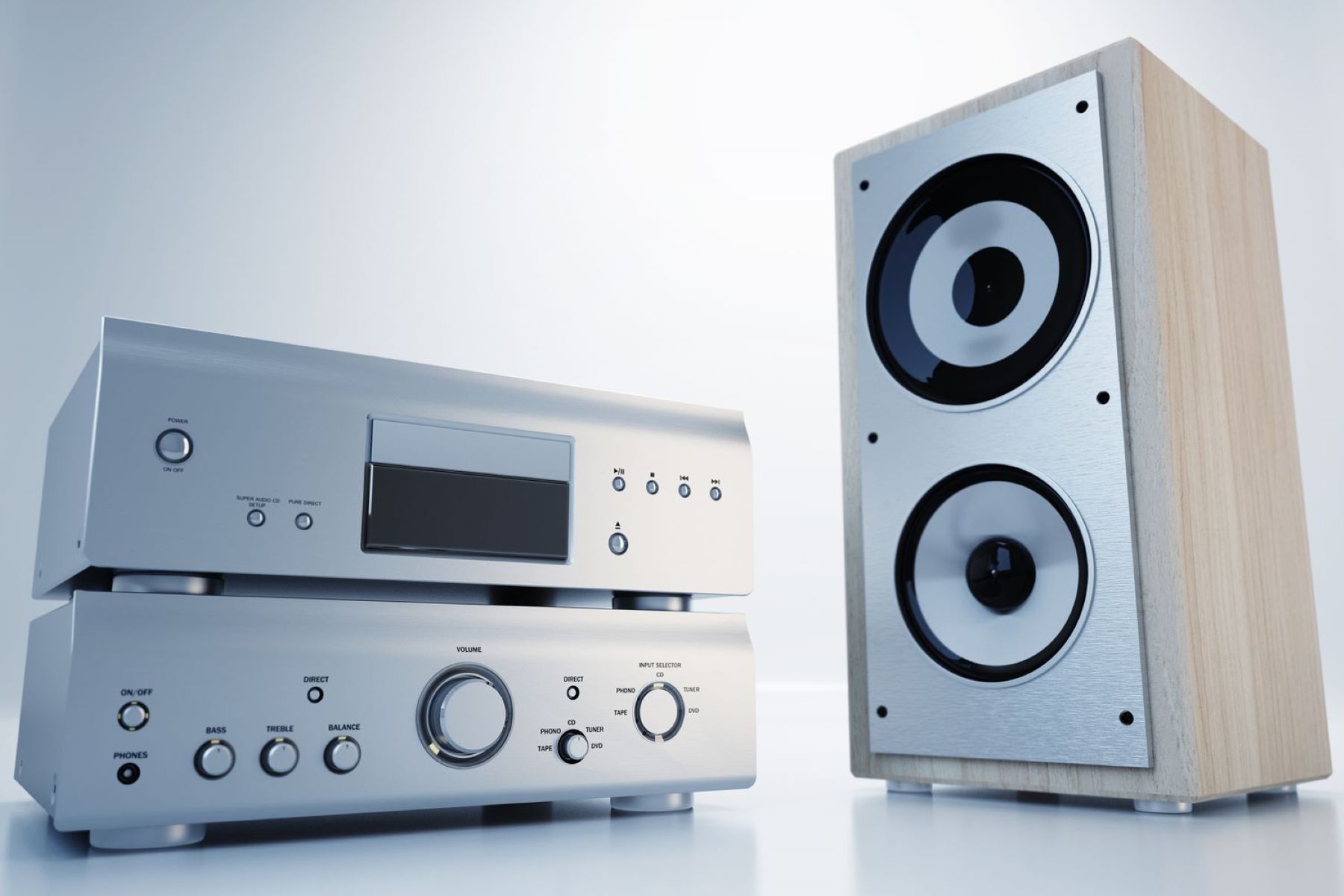Home>Devices & Equipment>Subwoofer>Where To Put A Subwoofer In A Car
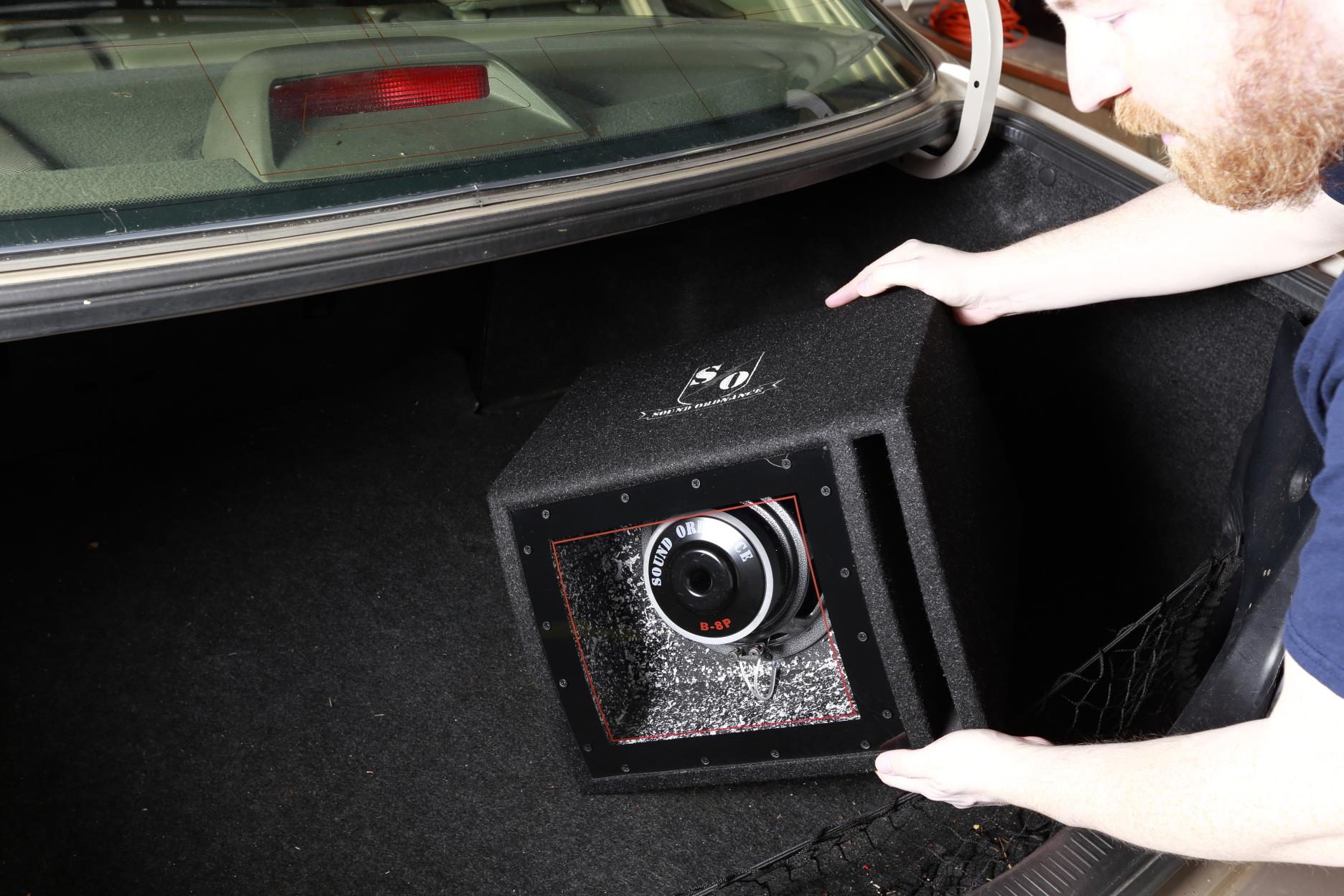

Subwoofer
Where To Put A Subwoofer In A Car
Modified: January 22, 2024
Looking for the perfect placement for your car subwoofer? Discover expert tips on where to put a subwoofer in a car for optimal bass and audio experience.
(Many of the links in this article redirect to a specific reviewed product. Your purchase of these products through affiliate links helps to generate commission for AudioLover.com, at no extra cost. Learn more)
Table of Contents
Introduction
When it comes to car audio systems, a subwoofer plays a crucial role in delivering deep and powerful bass that can elevate your music listening experience to the next level. However, to achieve optimal sound quality, the placement of the subwoofer is just as important as its specifications. Finding the right spot for your subwoofer in a car can make a significant difference in the overall audio performance and enjoyment.
A well-placed subwoofer not only enhances the clarity and definition of bass frequencies but also helps to balance the sound stage, providing a more immersive and balanced audio experience. But with various options available, knowing where to put a subwoofer in a car can be a daunting task.
In this article, we will explore the importance of subwoofer placement, discuss the factors you need to consider before deciding where to position your subwoofer, and highlight some popular locations for subwoofer placement in a car. Whether you are an audiophile or simply looking to improve your car audio system, understanding the optimal placement for your subwoofer will take your sound quality to the next level.
Importance of Subwoofer Placement
Proper subwoofer placement is essential for obtaining the best possible bass response and overall sound quality in a car audio system. Here are some reasons why subwoofer placement is so important:
- Bass response: The placement of the subwoofer significantly affects the bass response in the car. Placing the subwoofer in the right location helps to minimize unwanted resonances and cancellations, resulting in cleaner and tighter bass reproduction.
- Imaging and soundstage: A well-placed subwoofer aids in creating a balanced soundstage and proper imaging. By finding the optimal position and integrating it seamlessly with the other speakers, you can achieve a cohesive and immersive sound experience.
- Frequency response: Different locations in a car have varying effects on the frequency response of the subwoofer. Placing it in the wrong spot can lead to boomy or muddy bass, while the right placement ensures a smooth and balanced frequency response across the entire audible range.
- Minimizing distortion: Subwoofers generate intense vibrations and movements. Improper placement can cause unwanted rattles, buzzing sounds, or even damage to the vehicle’s interior. Correct placement helps reduce these distortions and ensures clean, distortion-free bass.
- Integration with the rest of the audio system: The subwoofer should seamlessly integrate with the other speakers in your car audio system. Proper placement ensures a smooth transition between the subwoofer and the mid-range and high-frequency speakers, resulting in a more natural and balanced sound reproduction.
It is worth noting that the optimal subwoofer placement may vary depending on factors such as the car’s interior design, the size of the subwoofer, the type of enclosure, and personal preference. Taking the time to experiment with different positions and configurations can help you find the perfect placement for your subwoofer and unleash its full potential.
Factors to Consider Before Placing a Subwoofer
Before deciding on the placement of your subwoofer in your car, there are several important factors to consider. These factors will help you determine the optimal position for your subwoofer to achieve the best possible sound quality:
- Car interior layout: The design and layout of your car’s interior play a significant role in subwoofer placement. Consider the available space, the shape of the car’s cabin, and any potential obstacles that may obstruct the sound waves.
- Size and type of subwoofer: The size and type of subwoofer you have will also impact its placement. Larger subwoofers may require more space and may not fit in certain areas of your car. Additionally, different types of subwoofers, such as sealed, ported, or bandpass enclosures, have different placement requirements.
- Power and volume: The power and volume at which you intend to use your subwoofer will affect its placement. Higher-powered subwoofers may require special reinforcement or enclosure designs, which could influence where you can place them.
- Wiring and connectivity: Consider the wiring and connectivity options for your subwoofer. Ensure that the chosen placement allows for easy access to power connections and audio inputs.
- Driver and passenger comfort: While achieving optimal sound quality is important, it is equally essential to consider the comfort of the driver and passengers. Ensure that the placement of the subwoofer does not hinder legroom, seating positions, or compromise the overall comfort of the car.
- Personal preference: Everyone has different preferences when it comes to the bass response and overall sound signature. Experiment with different placements to find the position that delivers the sound you enjoy the most.
By taking these factors into account, you can make an informed decision about where to place your subwoofer in your car. It’s important to strike a balance between achieving optimal sound quality, maximizing available space, and ensuring the comfort of all passengers. Keep these factors in mind as we explore different options for subwoofer placement in the next section.
Where to Put a Subwoofer in a Car
There are several popular locations where you can place a subwoofer in a car. The suitability of each location will depend on your specific car model, available space, and desired sound preferences. Here are some common options:
- Trunk Area: The trunk is a popular location for placing a subwoofer in a car. It provides ample space and allows for easy installation. Positioning the subwoofer in the trunk, facing towards the rear seats or the back of the car, can provide a powerful and immersive bass experience.
- Under the Front Seats: Another option is to position the subwoofer under the front seats. Many car manufacturers offer subwoofers specifically designed for this location. Placing the subwoofer under the seats can help save space and maintain a clean and uncluttered look in the car’s interior.
- Rear Seat Area: If you have foldable rear seats, you can consider placing the subwoofer in the rear seat area. This placement allows the subwoofer to fire towards the back of the car, enhancing bass response and providing an impactful sound experience for the rear passengers.
- Custom Enclosures and Kick Panels: Custom-made enclosures and kick panels can be designed to fit specific areas of your car’s interior, such as the side panels or footwells. These custom enclosures are specially crafted to house the subwoofer, providing optimal performance and a seamless integration into the car’s interior.
- Behind or under the Dashboard: Some cars have limited trunk space or specific interior constraints. In such cases, placing the subwoofer behind or under the dashboard can be an option. This placement, although more challenging to install, allows for a stealthy and hidden subwoofer setup.
- Center Console: If your car features a center console, you can explore the possibility of installing a subwoofer within it. This location offers a unique placement option, blending seamlessly with the car’s interior design while still delivering impactful bass.
- Door Panels: Some car owners choose to install subwoofers in the door panels. This placement, while not as common, can provide localized bass reinforcement and can work well for certain car models.
- Subwoofer Box Placement Tips: Regardless of the specific location you choose, consider the following tips for optimal subwoofer placement:
- Ensure a secure and stable installation to prevent unwanted vibrations or rattling.
- Experiment with different placements and angles to find the best position for your specific car model.
- Consider using sound-deadening materials to minimize vibrations and improve sound quality.
- Take into account the location’s impact on the overall balance of the sound system and adjust other speakers as needed.
- Consult a professional installer or car audio specialist for expert advice and guidance.
Remember, the best placement for your subwoofer may vary depending on your car’s interior, subwoofer size, and personal preferences. Take the time to experiment and fine-tune the positioning to achieve the desired sound quality and overall listening experience.
Trunk Area
The trunk area is one of the most popular and convenient locations for placing a subwoofer in a car. It provides ample space to accommodate a subwoofer enclosure, and the positioning can greatly enhance the bass response. Here are some things to consider when placing a subwoofer in the trunk:
– Enclosure Type: There are different types of enclosures available, such as sealed, ported, and bandpass enclosures. Choose the one that suits your preferences and car audio system requirements.
– Orientation: Orient the subwoofer enclosure facing towards the rear of the car or the rear seats. This helps to enhance the bass impact and evenly distribute the low-frequency energy throughout the car.
– Securing the Enclosure: It is essential to secure the subwoofer enclosure properly in the trunk to prevent movement and rattling. Use sturdy brackets or straps to ensure that the enclosure stays in place even during sharp turns or sudden stops.
– Airflow: Adequate airflow is crucial to prevent the subwoofer from overheating. Ensure that the enclosure has enough ventilation and is not obstructed by any objects in the trunk.
– Trunk Space: Consider how much trunk space the subwoofer enclosure will occupy. Make sure the placement does not significantly reduce the available storage space or hinder the accessibility of essential items in the trunk.
– Subwoofer Size: Depending on the available space in your car’s trunk, you may need to choose a subwoofer of an appropriate size. Larger subwoofers will require more space, so take accurate measurements before making a purchase.
Placing a subwoofer in the trunk area can create a powerful and immersive bass experience. However, it’s important to strike a balance between the desired bass impact and the practicality of trunk space usage. Experiment with different enclosure types and orientations to find the placement that delivers the best sound quality and fits well within your car’s trunk.
Under the Front Seats
Another popular option for subwoofer placement in a car is under the front seats. This location offers a space-saving solution while maintaining a clean and uncluttered look in the car’s interior. Here are some key considerations when placing a subwoofer under the front seats:
– Compact Subwoofers: Look for subwoofers specifically designed to be installed under the front seats. These compact subwoofers are usually slim, allowing them to fit easily in the limited space under the seats.
– Vehicle Compatibility: Not all car models have sufficient space under the front seats to accommodate a subwoofer. Before considering this placement, check if your car’s seats have enough clearance and if the subwoofer will fit without obstructing seat functionality or causing discomfort to the driver and passengers.
– Orientation: Position the subwoofer under the front seats in a way that the sound is projected towards the floor. This helps to enhance the low-frequency response and distribute the bass evenly throughout the car’s interior.
– Secure Mounting: Ensure that the subwoofer is securely mounted under the front seats to prevent any movement or rattling. Follow the manufacturer’s instructions for proper installation and use brackets or straps to keep the subwoofer in place.
– Power and Performance: Consider the power and performance of the subwoofer before opting for this placement. While under-seat subwoofers offer convenience and space efficiency, they may not deliver the same level of bass impact as larger, trunk-mounted subwoofers.
– Wiring and Connectivity: Make sure there is convenient access to power connections and audio inputs for the subwoofer. Choose a location that allows for easy wiring and connectivity without interfering with other components or causing visual clutter.
Placing a subwoofer under the front seats is a great option for car owners who prioritize space and a clean interior look. While it may not provide the same level of bass impact as trunk-mounted subwoofers, it can still enhance low-frequency response and add depth to the overall sound system. Consider the compatibility of your car model, the size and power of the subwoofer, and your personal preferences before choosing this placement option.
Rear Seat Area
Placing a subwoofer in the rear seat area is another popular option for car owners looking to enhance their bass experience. This location allows the subwoofer to fire towards the back of the car, providing a powerful and immersive bass response for the rear passengers. Here are some important factors to consider when placing a subwoofer in the rear seat area:
– Foldable Rear Seats: To utilize this placement, your car should have foldable or removable rear seats. This allows you to create space for the subwoofer enclosure without compromising the seating capacity.
– Enclosure Size and Type: Consider the size and type of the subwoofer enclosure based on the available space in the rear seat area. Depending on the dimensions, you may opt for a sealed, ported, or even a custom-designed enclosure to fit seamlessly in the rear seat area.
– Orientation and Positioning: Position the subwoofer enclosure in a way that the sound is projected towards the rear of the car. This ensures that the bass is evenly distributed and provides an immersive experience for the rear passengers.
– Securing the Enclosure: It is essential to securely mount the subwoofer enclosure to prevent any movement or rattling while the car is in motion. Ensure that the enclosure is safely installed and does not interfere with the foldability or operation of the rear seats.
– Impact on Seating Space: Consider how the placement of the subwoofer in the rear seat area affects the available seating space. Ensure that the rear passengers have enough legroom and that the subwoofer does not obstruct their comfort or safety.
– Integration with Other Speakers: Properly integrating the subwoofer with the rest of the car audio system is important. Adjust the settings and balance to ensure a smooth transition between the subwoofer and the mid-range and high-frequency speakers.
Placing a subwoofer in the rear seat area can create a powerful and immersive bass experience, especially for the rear passengers. It allows for optimal bass distribution and can enhance the overall listening experience in the car. However, it’s important to balance the impact on seating space and ensure the secure installation of the subwoofer enclosure. Consider these factors when exploring the option of placing a subwoofer in the rear seat area.
Custom Enclosures and Kick Panels
If you’re looking for a tailored and integrated solution, custom enclosures and kick panels offer a unique option for subwoofer placement in a car. These custom-made enclosures are designed to fit specific areas of your car’s interior, such as the side panels or footwells. Here’s what you need to know about custom enclosures and kick panels:
– Tailored Fit: Custom enclosures and kick panels are built specifically for your car model, ensuring a perfect fit and seamless integration with the interior. These enclosures are designed to maximize available space while maintaining the aesthetic appeal of the vehicle.
– Enhanced Sound Quality: With a custom enclosure or kick panel, you can optimize the acoustics of your car’s interior. These specialized enclosures are often designed to minimize resonance and vibrations, resulting in cleaner and more accurate bass reproduction.
– Location Options: Custom enclosures and kick panels offer various placement options depending on your preferences and available space. They can be installed in the side panels, footwells, or even integrated into the trunk area, allowing for a flexible and personalized solution.
– Professional Installation: Due to the customized nature, professional installation is highly recommended for custom enclosures and kick panels. An experienced installer can ensure proper fitment, wiring, and acoustic optimization for the best possible sound quality.
– Visual Integration: Beyond the acoustic benefits, custom enclosures and kick panels can be visually integrated into the car’s interior design. They can be customized with matching upholstery, trim, or even lighting, complementing the overall aesthetics of the vehicle.
– Space Considerations: Before opting for custom enclosures or kick panels, consider the impact on available space. These custom solutions may slightly reduce legroom or storage options, so it’s important to evaluate how the installation will affect the car’s practicality.
If you desire a high-end and customized audio solution, custom enclosures and kick panels offer a fantastic option for subwoofer placement. They provide tailored fitment, enhanced sound quality, and seamless integration into the car’s interior. Work with an experienced installer who specializes in custom audio installations to ensure the best results.
Behind or under the Dashboard
For car owners looking for a hidden and discreet subwoofer placement, behind or under the dashboard can be a viable option. While this placement can be more challenging to install, it offers a stealthy and integrated solution for subwoofer placement. Here are some key considerations:
– Space Availability: Assess the available space behind or under the dashboard to determine if it can accommodate a subwoofer enclosure. This placement option is more feasible in cars with spacious dashboards or those with removable panels.
– Stealthy Installation: Placing the subwoofer behind or under the dashboard allows for a hidden and seamless integration. With proper installation and wiring, the subwoofer becomes virtually invisible, maintaining the original aesthetics of the car’s interior.
– Custom Fabrication: Depending on the car model and dashboard design, custom fabrication may be required to create a suitable enclosure or mounting solution. Professional installers who specialize in custom audio installations can help design and fabricate the necessary components.
– Acoustic Considerations: The placement behind or under the dashboard may affect the sound dispersion and resonance. Adjustments in the subwoofer’s settings and tuning may be necessary to achieve optimal sound quality and balance with the other speakers in the car.
– Heat Dissipation: Be mindful of potential heat buildup in the dashboard area. Ensure that the subwoofer enclosure has adequate ventilation to prevent overheating and damage to the subwoofer and other electronic components.
– Professional Installation: Due to the complexity of the installation, professional assistance is recommended for placing a subwoofer behind or under the dashboard. Specialists in car audio installations have the expertise to navigate the intricacies of this placement and ensure a seamless integration.
Placing a subwoofer behind or under the dashboard offers a hidden and integrated solution, ideal for car owners who prioritize a clean and factory look. With custom fabrication and professional installation, you can achieve a high-quality audio experience without sacrificing the original aesthetics of your car’s interior.
Center Console
The center console is an often overlooked but promising location for placing a subwoofer in a car. This placement option offers a unique and integrated solution that blends seamlessly with the car’s interior design. Here are some key considerations for placing a subwoofer in the center console:
– Available Space: Assess the space within the center console to determine if it can accommodate a subwoofer enclosure. Keep in mind that this placement option may be more feasible in vehicles with larger and deeper center consoles.
– Custom Enclosures: Due to the unique shape and dimensions of center consoles, custom enclosures may be necessary for a proper fit. Ensure that the subwoofer enclosure is specifically designed for the center console to maximize efficiency and sound quality.
– Orientation and Positioning: Position the subwoofer enclosure within the center console in a way that optimizes the sound dispersion and bass response. Experiment with different orientations to achieve a balanced and immersive audio experience.
– Visual Integration: When installing a subwoofer in the center console, consider how it visually integrates with the overall design of the interior. Choose a subwoofer and enclosure that match the materials, colors, and finishes of the center console to maintain a cohesive and aesthetically pleasing look.
– Structural Reinforcement: Depending on the weight and size of the subwoofer enclosure, structural reinforcement may be required within the center console to ensure stability and prevent rattling or vibrations during operation.
– Impact on Storage: Consider how the placement of the subwoofer in the center console affects its storage capacity. Ensure that essential items can still be stored without compromising the functionality and convenience of the center console.
Placing a subwoofer in the center console offers a sleek and integrated audio solution that seamlessly blends with the car’s interior. Custom enclosures and careful positioning can help achieve optimal sound quality while enhancing the overall aesthetics of the center console. Consult with a professional installer specializing in custom audio installations to ensure a seamless and efficient integration.
Door Panels
While not as common as other placement options, installing a subwoofer in the door panels can provide localized bass reinforcement and a unique audio experience. This option allows for an efficient use of space and can enhance the overall soundstage in the car. Here are some key considerations when placing a subwoofer in the door panels:
– Door Panel Compatibility: Check if the door panels in your car have enough space to accommodate a subwoofer enclosure without compromising the structural integrity or functionality of the doors. Some car models may have dedicated locations within the door panels for speaker installations.
– Custom Enclosures: Due to the varying sizes and shapes of door panels, custom enclosures may be necessary for proper fitment. Custom fabrication may be required to ensure the subwoofer enclosure fits securely and does not interfere with the operation of the door or window mechanisms.
– Localized Bass Reinforcement: Placing a subwoofer in the door panels can provide focused and localized bass reinforcement. This placement option can help improve the overall soundstage and create a more immersive listening experience, especially for the driver and front passenger.
– Acoustic Considerations: It is important to consider the impact of the door panel placement on the overall sound balance. Adjustments in the subwoofer’s settings and tuning may be necessary to achieve optimal integration with the rest of the car’s audio system.
– Structural Reinforcement: Reinforcing the door panels may be required to handle the weight and vibrations generated by the subwoofer. This can help minimize rattling and ensure a stable installation.
– Professional Installation: Due to the complexity of installing a subwoofer in the door panels, professional assistance is recommended. An experienced installer can properly assess the door panel construction, choose the right components, and ensure a seamless integration for optimal sound quality.
Placing a subwoofer in the door panels can enhance the low-frequency performance of your car’s audio system and add depth to the soundstage. Careful consideration of compatibility, custom enclosures, acoustic adjustments, and professional installation can help you achieve a rewarding audio experience through the door panel placement option.
Subwoofer Box Placement Tips
Proper placement of the subwoofer box is crucial for optimizing sound quality and maximizing the performance of your car audio system. Here are some essential tips to consider when it comes to subwoofer box placement:
– Experiment with Different Positions: Don’t be afraid to try out different locations within your car. Depending on the size and shape of your vehicle, certain positions may yield better acoustic results. Test placements in the trunk, under the seats, or in the center console to find the optimal position that delivers the desired bass response.
– Consider Air Space Requirements: The subwoofer box requires a specific amount of air space to function optimally. Be sure to read the manufacturer’s specifications and recommendations for air space requirements. Ensure that the chosen location can accommodate the necessary air space to avoid distorting or reducing the subwoofer’s performance.
– Avoid Obstructions: Ensure that the subwoofer box is not obstructed by any objects or surfaces that can hinder sound dispersion. Keep the area around the subwoofer box clear to allow for proper airflow and prevent unwanted vibrations or distortions.
– Minimize Rattles and Vibrations: Secure the subwoofer box tightly to prevent any rattling or vibrations. Loose connections can result in poor sound quality and potential damage to the subwoofer. Use brackets, straps, or mounting hardware to ensure a secure and stable installation.
– Balance with Other Speakers: Adjust the settings and equalization of your car audio system to achieve a balanced blend between the subwoofer and the other speakers. Properly integrating the subwoofer box with the rest of the system will result in a cohesive and enjoyable listening experience.
– Consider Sound-Damping Materials: To minimize unwanted vibrations and resonances, consider using sound-damping materials such as dynamat or foam insulation. These materials can help improve the overall sound quality by reducing vibrations and ensuring cleaner bass reproduction.
– Consult with Professionals: If you’re unsure about the best placement for your subwoofer box or want to ensure optimal performance, consult with professionals who specialize in car audio installations. They have the knowledge and experience to guide you in finding the ideal placement for your specific vehicle and audio setup.
Remember, finding the perfect placement for your subwoofer box may require some trial and error. Take the time to experiment with different positions, adjust settings, and fine-tune your car audio system to achieve the best possible sound quality and bass performance.
Conclusion
Choosing the right placement for your subwoofer is an essential part of optimizing your car audio system and enhancing your overall listening experience. The ideal subwoofer placement will depend on various factors such as available space, car interior layout, and personal preferences.
Whether you opt for the trunk area, under the front seats, rear seat area, custom enclosures, behind or under the dashboard, center console, door panels, or any other location, it’s important to consider the impact on sound quality, practicality, and visual integration within your car’s interior.
By considering factors such as bass response, imaging and soundstage, frequency response, and driver and passenger comfort, you can make an informed decision about where to place your subwoofer. Experimentation, professional guidance, and meticulous installation can help achieve optimal performance and an immersive listening experience.
Remember to also pay attention to subwoofer box placement tips such as creating adequate air space, minimizing vibrations, and balancing the system with other speakers. These tips will further enhance the performance and integration of your subwoofer within the car audio system.
Ultimately, the goal is to find the placement that delivers the desired bass impact, blends seamlessly with your car’s interior, and brings out the best in your favorite music. Whether you’re a passionate audiophile or simply looking to upgrade your car audio system, taking the time to find the optimal subwoofer placement will undoubtedly elevate your driving experience.


